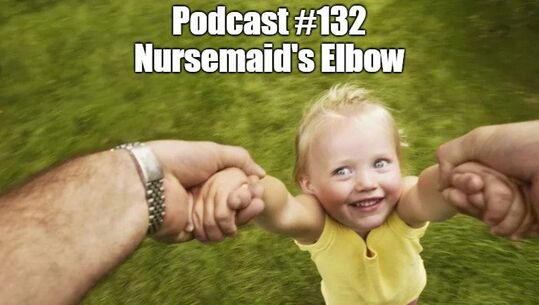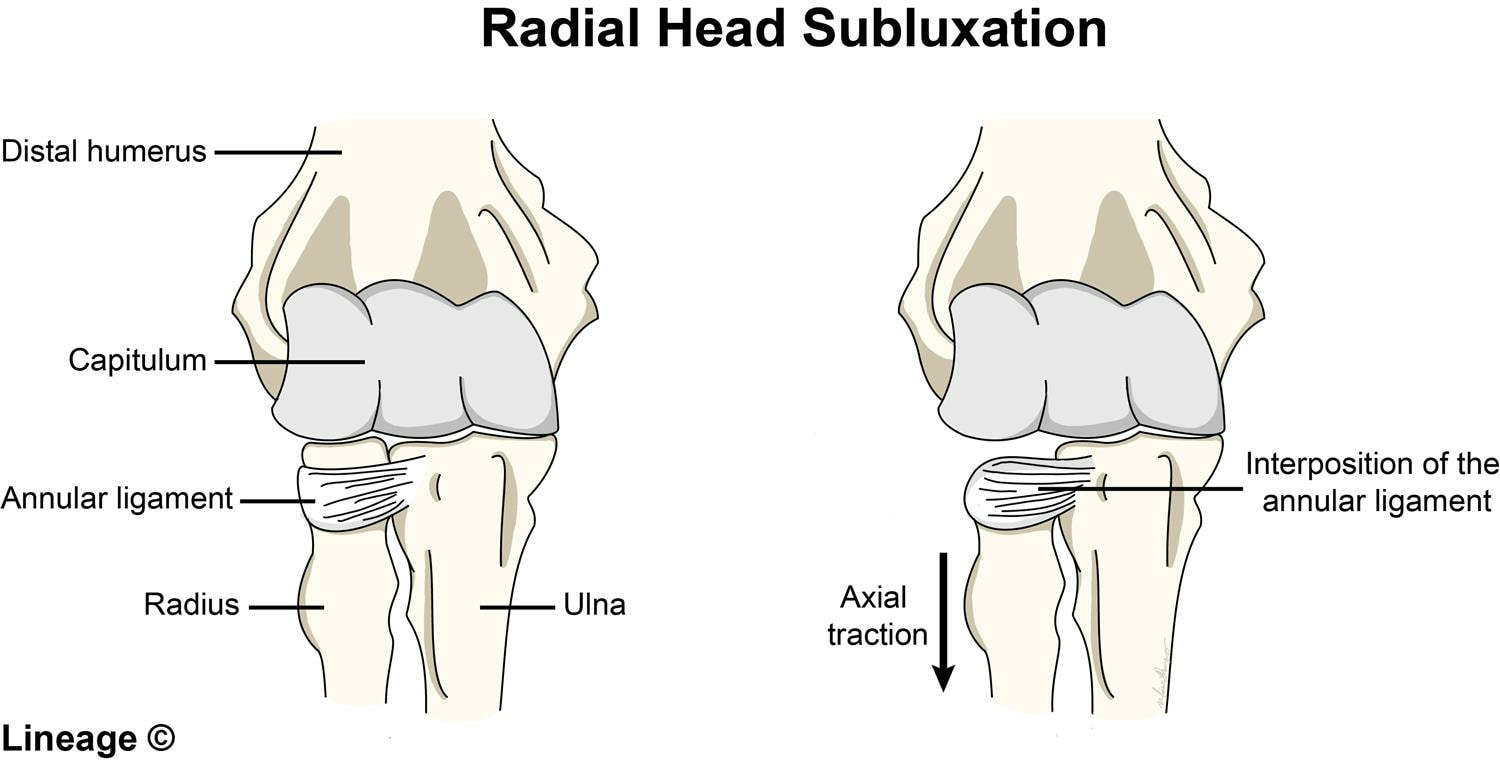|
Radial head subluxation, commonly referred to as nursemaid's elbow, is a common condition. In this post we talk about how to diagnose and manage this condition in a timely and effective manner.
Housekeeping
Thank you WEMSA for having TOTAL EM come and speak. Make sure to check the next podcast at Wisconsin Dells, Wisconsin in November 2019. Check out Yes, I Scan at AAPA May 2019. For students this is free but there will also be paid workshops in conjunction with SPOCUS and Practical POCUS. There are also paid sessions for a VERY low cost and you can register now for discounted rates to the conference. If you are looking for us as a speaker, make sure to contact us at [email protected] or through the website. Epidemiology and Pathology This pathology usually occurs in children 1-4 years of age and frequently during the second year of life which makes the diagnosis sometimes a little more difficult. It occurs as the annular ligament becomes interposed between the radial head and cepitellum usually after sudden, longitudinal traction while the elbow is extended and the forearm pronated. This decreases with time as the annular ligament becomes thicker and stronger at the distal attachment. Below is an image that demonstrates this pathology on the right and a normal elbow on the left.
Diagnosis
The diagnosis is usually clinical. Think of a patient not wanting to move their arm after a sudden event. Usually, they hold their elbow with some flexion and the forearm pronated. Tenderness is often minimal and located at the lateral aspect of the elbow. With some encouragement they may be able to move the rest of the extremity and even perform flexion and extension of the elbow. However, with supination or further pronation, they will cry and try to protect the extremity. Imaging In most cases, imaging is not necessary. X-rays are rarely helpful and will be normal. Sometimes during the process of obtaining the x-rays they will be reduced. X-rays are beneficial if there are concerns regarding other injuries such as a fracture being more likely. However, ultrasound can play a potential role especially if the diagnosis is inconclusive by physical exam. There is an article detailing the technique and various findings that appear in this condition. Differential Diagnosis It is worth remembering there are other potential causes such as fracture, septic arthritis, radial head dislocation, and forearm synostosis. Technique The main approach is closed reduction, but rarely it needs open reduction. Mainly, this is for chronic, symptomatic subluxations that are not reduced with a closed technique. Supination can be used which involves holding the arm supinated and the elbow maximally flexed. In both that technique and the hyperpronation technique pressure is applied over the radial head where a palpable click is often felt. For hyperpronation the forearm is held flexed but can be extended at the elbow as significant pronation is placed holding the wrist. Here is a quick video from the Merck Manual that goes over both methods. Usually the patient cries during the technique but shortly afterward should be fully using the upper extremity without difficulty. If pain persists x-ray should be considered. Let us know what you think by giving us feedback here in the comments section or contacting us on Twitter or Facebook. Remember to look us up on Libsyn and on iTunes. If you have any questions you can also comment below, email at [email protected], or send a message from the page. We hope to talk to everyone again soon. Until then, continue to provide total care everywhere.
2 Comments
This Blog Is Very Helpful And Informative For This Particular Topic. I Appreciate Your Effort That Has Been Taken To Write This Blog For Us. Radial head fracture treatment, nursing diagnosis for head injury, nursing management of head injury, head injury blood clot treatment, nursing management of head injury patient, medical management of head injury, surgical management of head injury, care of patient with head injury, forehead bump treatment, head injury surgery. <a href="https://curerehab.in/Head-Injury-Rehabilitation"> physiotherapy in Hyderabad </a>
Reply
This Blog Is Very Helpful And Informative For This Particular Topic. I Appreciate Your Effort That Has Been Taken To Write This Blog For Us. Radial head fracture treatment, Nursing diagnosis for head injury, Nursing management of head injury, head injury blood clot treatment, nursing management of head injury patient, medical management of head injury, surgical management of head injury, care of patient with head injury, forehead bump treatment, head injury surgery. <a href="https://curerehab.in/Head-Injury-Rehabilitation"> physiotherapy in Hyderabad </a>
Reply
Leave a Reply. |
Libsyn and iTunesWe are now on Libsyn and iTunes for your listening pleasure! Archives
August 2022
Categories |
||||||



 RSS Feed
RSS Feed